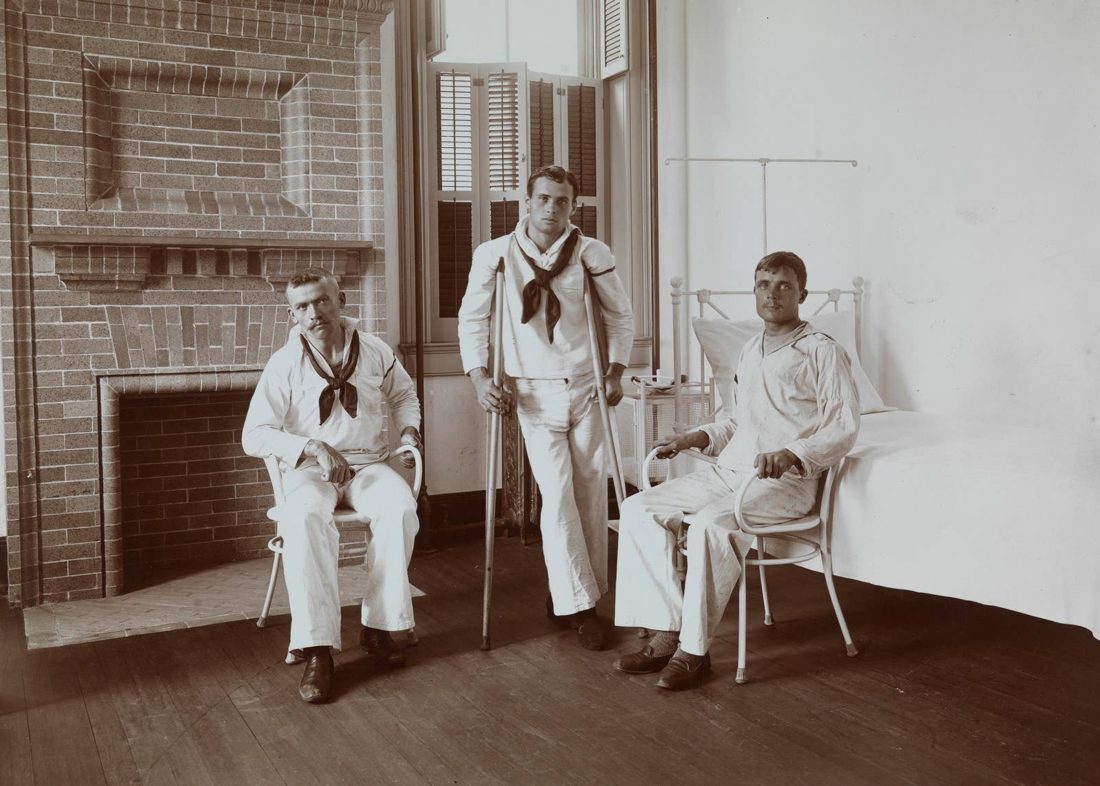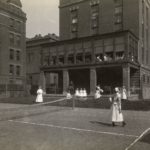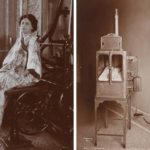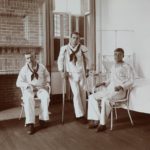A recent piece of photojournalism by Gabriel H. Sanchez in Buzzfeed (link) shows what hospital care was like in New York 100 years ago.
The images are timely because they remind us about the things that have changed (nurses in pillbox hats, horse-drawn carriages, tennis courts for the staff), and the things that have remained the same.
Today, amidst the COVID-19 pandemic, hospitals and specialised care centres remain perhaps the most visible and powerful symbol of our battle against ill-health and pestilence. And much was the same in 1905.
Rows and rows of hospital beds lined up to accommodate the masses of poor and unfortunate victims of illness and injury can be seen today just as in the Bellevue Hospital on Blackwell’s Island in the mid-1890s.
Doctors still sits at the centre of the public’s perception of healthcare, as did Dr John Allan Wyeth in his surgical demonstration room at the New York Polytechnic Medical School 1902.
And the laboratories, radiography rooms, surgical suites, and maternity wards still bear striking resemblances to today.
Two of the photos in the collection of particularly striking for physiotherapy today though.
The first is an image of three men (’Patients, 1898’) in naval uniform. One is leaning on his crutches while his two co-convalescees sit on either side. There is a single bed in the room, an empty fireplace, and a shuttered window. There are no decorations on the wall and the floor looks spotlessly clean. The scene is quite domestic. We know nothing about the men’s reasons for being on this ‘ward’, but they do appear to be remarkably well. I doubt very much whether you would find young men looking this healthy waiting around in hospital wards for rehabilitation or surgery today.
The other particular image is of ‘A woman in a chair like vibrating machine used for therapy at the Zander Institute, 1908’.
We know a good deal about Dr Gustav Zander and his works from the work of {Fischinger et al., 2009, #32793; Hansson and Ottosson, 2015, #67597; Terlouw, 2007, #69771; Terlouw, 2004, #51461}. We know that Zander pioneered the use of bespoke equipment as an adjunct to physical therapy for people with a variety of local and systemic health problems.
Emil Kleen, in his 1918 book Massage and Medical Gymnastics described Zander’s work in this way;
’In the latter part of the (18)60s Swedish medical gymnasts received a noteworthy reinforcement. About this time Dr Gustav Zander began to construct, and to give treatment by means of, is most ingenuously-thought-out apparatus. (Some people, I know not why, have a certain objection to calling these apparatus machines although they are partly driven by steam.) By means of these apparatus, movements of all kinds are given: active movements, most concentric and eccentric resistance movements, movements regulated by balance wheels, passive movements. Some of the apparatus concerned massage; of these the vibrators especially work excellently. On the whole one may say that the Zander “medico-mechanical” method aimed at and succeeded in partially replacing manual work in the Ling treatment by apparatus and steam power. Moreover, in some – for example, in the rhythmical movements regulated by balance wheels – it has gone beyond Ling’s manual treatment. Although I cannot refrain from expressing my opinion that the standard treatment, as well as the manual method, is in these days and by many of my colleagues too highly estimated in regard to its therapeutic range, I will also express my hearty recognition of the great talent of the inventor, of the inherent importance of the subject, and especially of the service it has rendered in spreading the knowledge of mechano-therapy’ {Kleen, 1918, #814@12}.
Two decades later, Frank Krusen writes a postscript to Zander, whose machines appear to have fallen out of favour in a matter of just two decades;
‘Fifty years ago (then, the late 1890s), many hospitals were equipped with so-called Zander rooms. These rooms were filled with many pieces of complicated apparatus for the exercising of certain parts of the body. Today, such apparatus is practically never used in America and the “Zander room? has been replaced by the “corrective gymnasium” in which technicians skilled in physical therapy direct the patients in free exercises for the correction of various bodily lesions’ {Krusen, 1942, #96329@39-40}.
Active and passive movements, mechanical vibration, and other forms of induced movement were particularly popular in gilded age America, and Zander’s machines tapped into the zeitgeist of industrial America; people’s growing affluence; and, perhaps most significantly today, people’s concerns about germs and human contact.
Ultimately, Zander’s machines proved too expensive and too restrictive for many. But these images reinforce the Mark Twain aphorism that history does not repeat itself, but it does rhyme.
References
Fischinger, J., Fischinger, A., & Fischinger, D. (2009). Doctor Zander’s medico-mechanical institute in Opatija. Acta Medico-Historica Adriatica, 7(2), 253-266.
Hansson, N., & Ottosson, A. (2015). Nobel Prize for Physical Therapy? Rise, Fall, and Revival of Medico-Mechanical Institutes. Physical therapy. doi:10.2522/ptj.20140284
Kleen, E. A. (1918). Massage and Medical Gymnastics (M. Dobbie, L., Trans.). London, UK: J. & A. Churchill.
Krusen, F. H. (1942). Physical Medicine: The Employment of Physical Agents for Diagnosis and Therapy. Philadelphia: W.B. Saunders.
Terlouw, T. J. A. (2007). The rise and fall of Zander-Institutes in The Netherlands around 1900. Medizin, Gesellschaft, Und Geschichte, 25, 91-124.
Terlouw, T. J. A. (2004). De opkomst en neergang van de Zander-instituten rond 1900 in Nederland. Gewina/TGGNWT, 27(3), 135-158.




